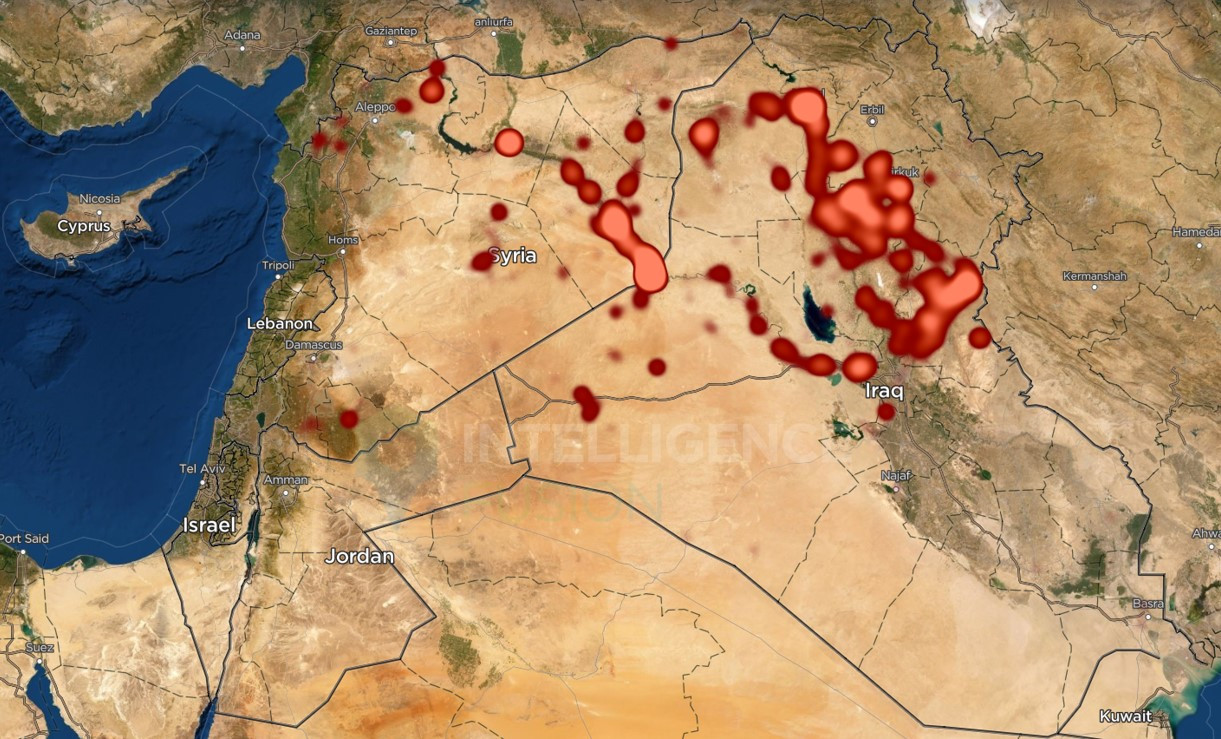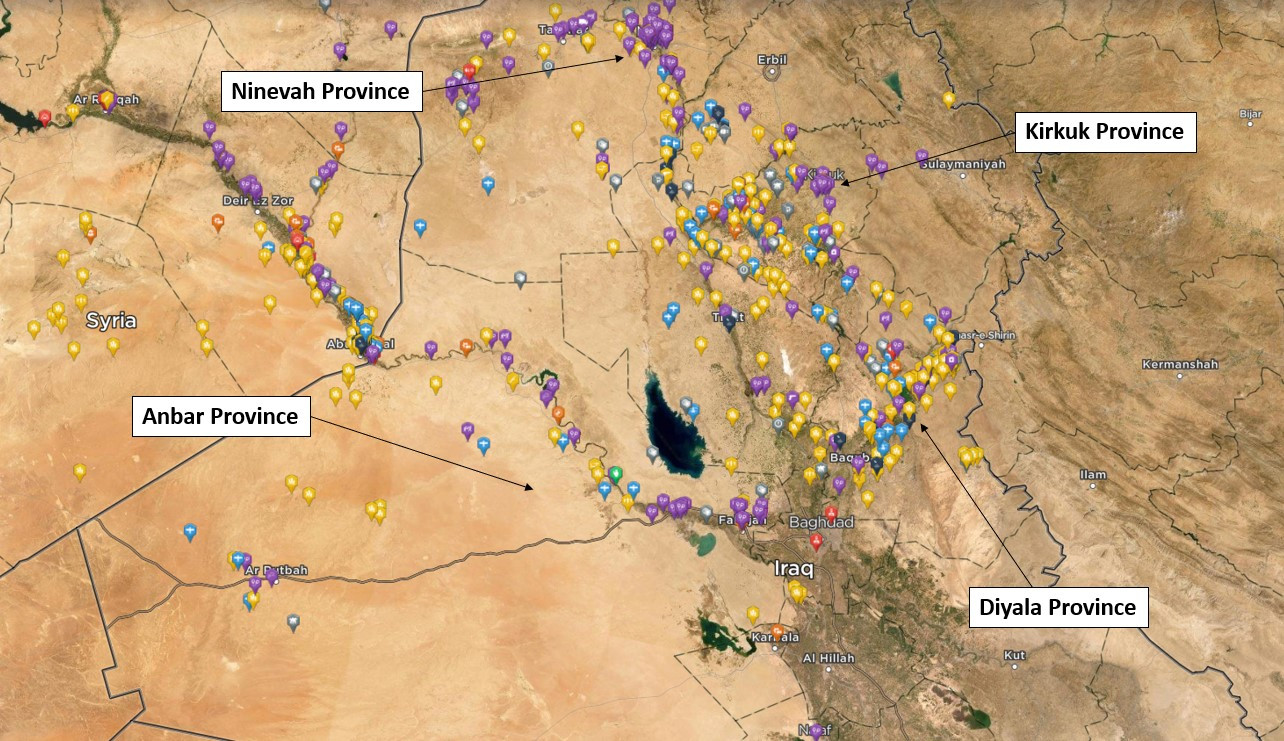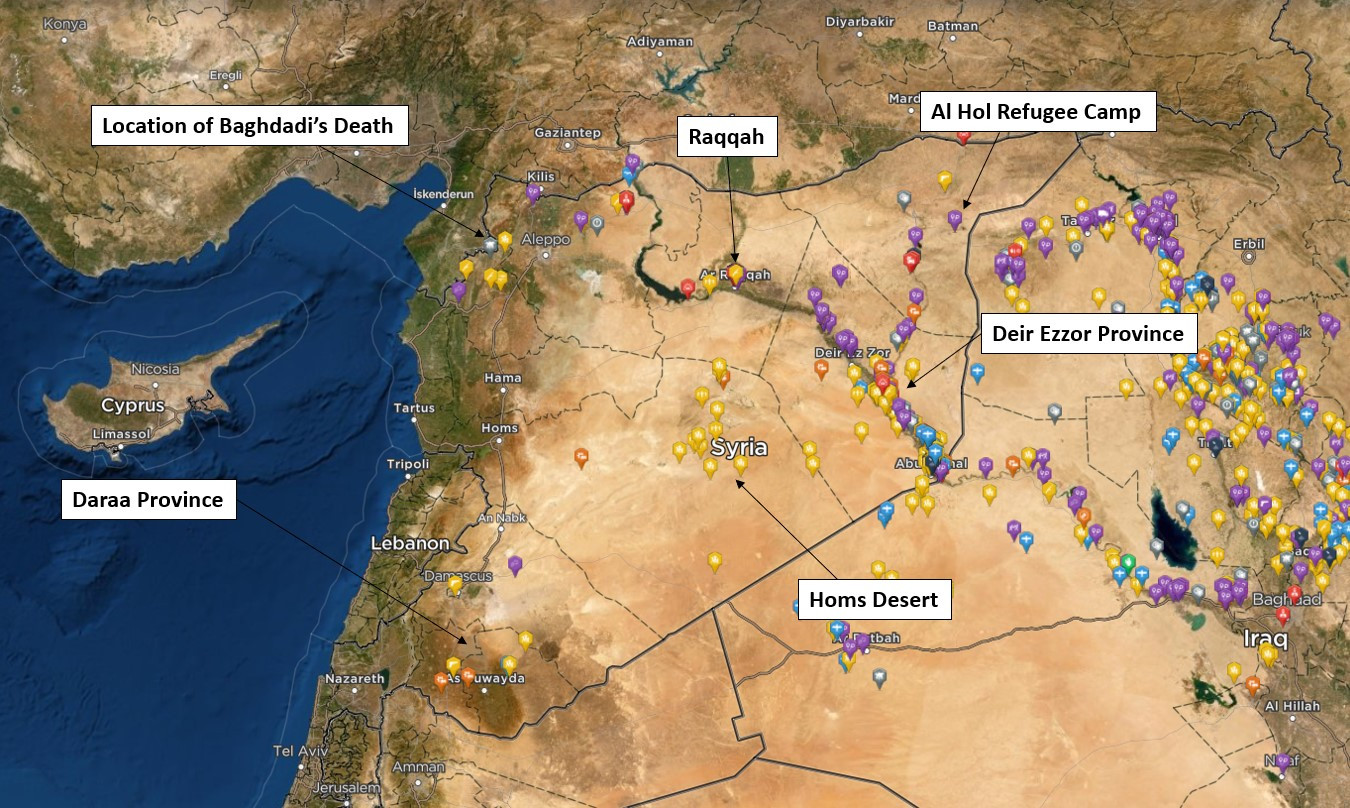Baghdadi’s Death: In Context
What happened?
On 27th October 2019, Ibrahim Awad Ibrahim Ali al-Badri al-Samarrai, known as Abu Bakr al-Baghdadi, was killed during a US special forces operation in Barisha, Idlib, close to the Turkish border.
Intelligence Fusion’s Senior Regional Analyst for Asia and the Middle East provides context on what we know so far about Baghdadi’s death and the operation that killed him.
The Operation
US forces arrived in the area in eight helicopters before entering the compound. Baghdadi is then reported to have been chased into a tunnel built under the compound, where he detonated his suicide vest.
The Intelligence leading to the operation came from a variety of sources, including the Turkish military and Syrian Kurdish forces. Exact details regarding the intelligence used are unclear, but initial reporting suggested that US forces were able to track Baghdadi following the arrest of an aide in Iraq. Using intelligence gathered from interrogation, US intelligence began to gain a clearer picture of the network used to transport Baghdadi throughout the region.
The raid was immediately followed by two more raids near the border town of Jarabulus. In the first raid, on the 27th October, a truck carrying IS commander Abu al-Hassan al-Muhajir was targeted in a US drone strike. In the second operation nearby in the Shuyuck village, two IS commanders were arrested during another US special forces operation. It’s likely that both operations were augmented by intelligence carried out by the initial Baghdadi raid on October 27th.
The death of Baghdadi is not expected to have a significant impact on IS at a tactical and operational level, as since the loss of territory, IS operates in the form of a network of semi-independent cells. The loose cell structure allows IS commanders and fighters to use their own discretion in conducting operations, rather than being restricted to a top-down leadership structure. However, potential complications are possible in who will replace Baghdadi, with the leader’s succession being further complicated by the additional arrest and killing of IS commanders in follow up operations after Baghdadi’s death. US forces claimed that Abu al-Hassan al-Muhajir was a potential successor to Baghdadi, although this claim has been disputed.

Islamic State Operations in Iraq
IS operates in Iraq via a network of cells which carry out daily attacks on security forces in rural areas. The attacks normally come in the form of an attack on a police checkpoint or a convoy, using IEDs, indirect fire and small arms. The US-led coalition and Iraqi security forces have been proactive in targeting gatherings of militants with airstrikes, forcing cells to operate in quick attacks, avoiding concentrating in an area for too long.
IS have also continued to intimidate local villagers who defy the group or who have in the past opposed IS. In the summer of 2019, IS militants burnt crops of farmers in Kirkuk, causing massive damage to farmers in the area, and highlighting the threat that the group continues to pose. The objective of the crop burnings varied, with reasons being to intimidate villagers, or punish those that refuse to pay tax to IS.
Intimidation tactics have also targeted government officials in areas where IS remain a significant threat. Recently, on October 24th 2019, a series of assassinations were carried out in the night in which government officials and tribal sheikhs affiliated with government officials were assassinated by unidentified gunmen, believed to have been IS militants.
To varying degrees, IS has been able to utilise levels of passive support from members of the Iraqi Sunni community. Widespread accusations of corruption aimed at the Iraqi government, and long term lingering fears of a Shia dominated government have historically fuelled Iraq’s Sunni insurgencies, and these sentiments are currently overtly visible within Iraqi society. Whilst IS represent a particularly violent form of Sunni insurgency, with more overt Islamist themes, the group is still seen as a product of the same fears which have allowed other insurgent groups to thrive. Without significant socio-economic reform and in the context of Iraq’s continued high levels of unemployment (particularly among youths) IS will continue to be provided with a valuable recruitment tool.

Islamic State Operations in Syria
In Syria, IS pursue a strategy consistent with that seen in Iraq. The group employs a vast network of sleeper cells to carry out attacks on isolated positions. IS activity is at its most frequent in Deir Ezzor Province, although IED and cell-related attacks are common in Kurdish controlled Raqqah and Hasakah.
In Idlib, where Baghdadi and a number of other IS commanders were killed in recent US operations, IS presence is felt in the form of infrequent IED attacks and assassinations. IS presence in Idlib is restricted by the presence of Hayat Tahrir al-Sham, who have opposed and actively hunted IS cells in the region.
Syrian Government controlled areas also still see a high level of IS activity, particularly in the desert of Homs and Deir Ezzor provinces. The city of Palmyra in Homs and surrounding area has seen SAA convoys ambushed as they travel along isolated desert roads, often leading to large, but essentially ineffective, clearing operations. In Daraa Province in the south, both IS and rebel forces have targeted Syrian Government forces with IED attacks and assassinations. IS have claimed responsibility for a number of Daraa’s attacks.
Whilst IS have been active in targeting all factions throughout the Syrian Civil War, attacks in Kurdish controlled areas are recorded more frequently than elsewhere. Kurdish forces, under the banner of the ‘Syrian Democratic Forces’ (SDF) are also in control of numerous refugee camps holding vast numbers of IS militant’s family members.
The camps have become a point of controversy, particularly in the context of the recent Turkish ‘Operation Peace Spring’ and the subsequent withdrawal of US military personnel. The camps have long since been targets for IS, who refer to them frequently in their own media, denouncing the way in which female family members of IS militants are being held. The IS focus on the camps has led to increased fears of large scale jail breaks being attempted at the camps, which often only boast limited security from outside attack.

Recruitment
In order to sustain operations, IS has maintained a comprehensive recruitment network, drawing fighters from within Iraq and Syria itself. The groups use of foreign fighters, particularly those from Western Europe, helped the group to gain significant levels of attention in western media, however, flows of recruits from across the globe appear to have dropped dramatically since the group lost its last portion of territory. Regardless, recruitment figures of fighters from across the globe have always been far lower than the volume of fighters recruited from within Iraq and Syria.
Therefore, the reduction in fighters from places such as France and the UK has had a relatively small impact. In fact, A US document stated that in the second quarter of 2019, numbers of IS militants in Iraq actually increased, as fighters withdrew from Syria and sought refuge in the Iraq’s rural areas north and west of Baghdad. The same document stated that IS fighters are able to manipulate tribal and family connections in Sunni areas of Iraq, particularly in Anbar Province, to continue to draw fighters or passive support for the group.
As already mentioned, refugee camps in Syria are seen as an important objective by IS. The squalid conditions seen inside of the camp and the presence of high numbers of radicalised family members in the camps has turned the camps into highly volatile hubs of pro-IS radicalism. IS would be able to recruit large numbers of suicide bombers from the youths staying in the camp, many of whom have been exposed to violent jihadist ideology throughout their childhoods.
Intelligence Fusion follow every incident until conclusion. Do you get this detail from your intelligence provider?
If you’d like to speak to us about getting near real-time incidents, like the Baghdadi operation, directly to your inbox, book your free demonstration with a member of the IF Team.
